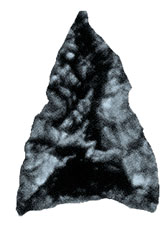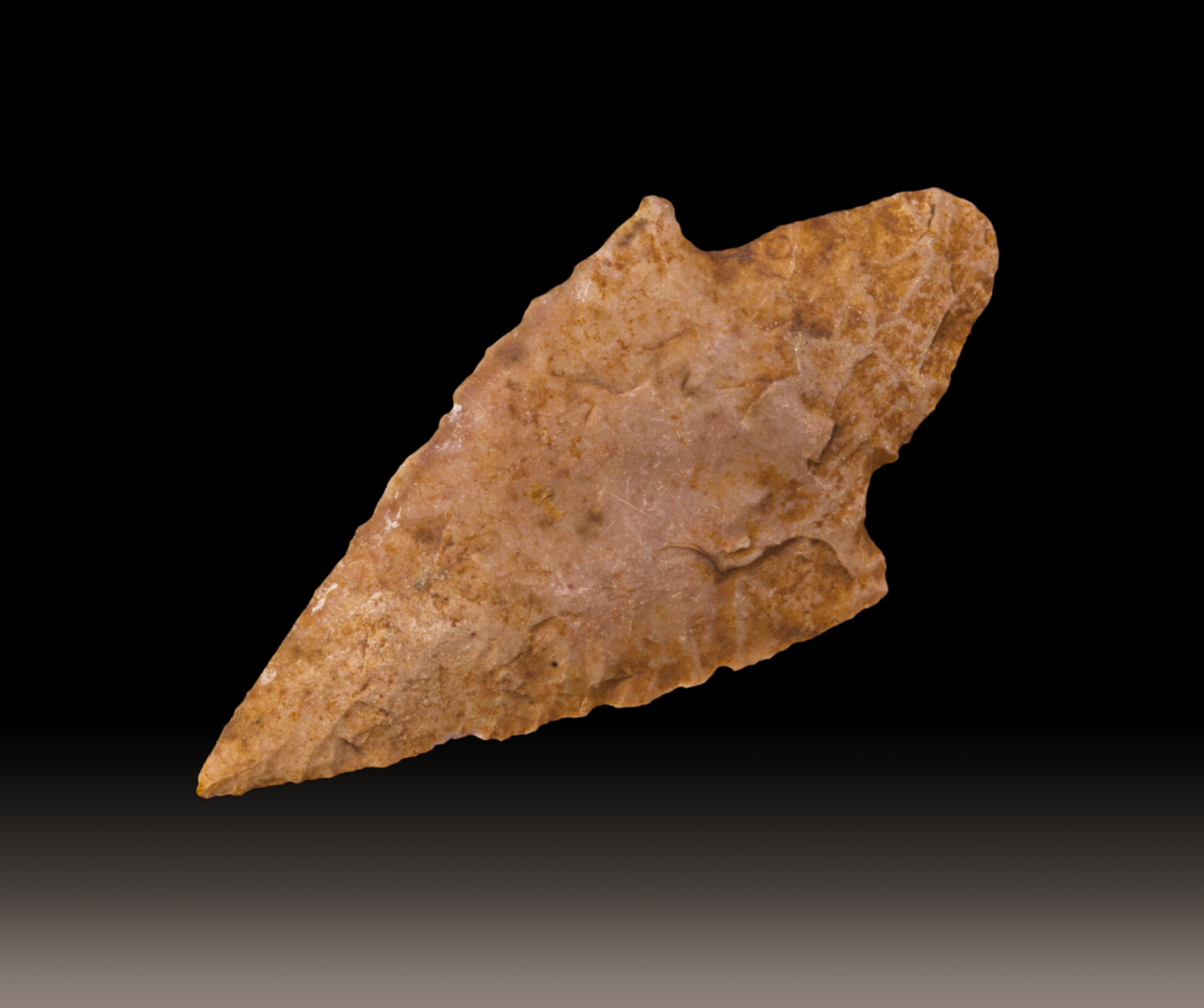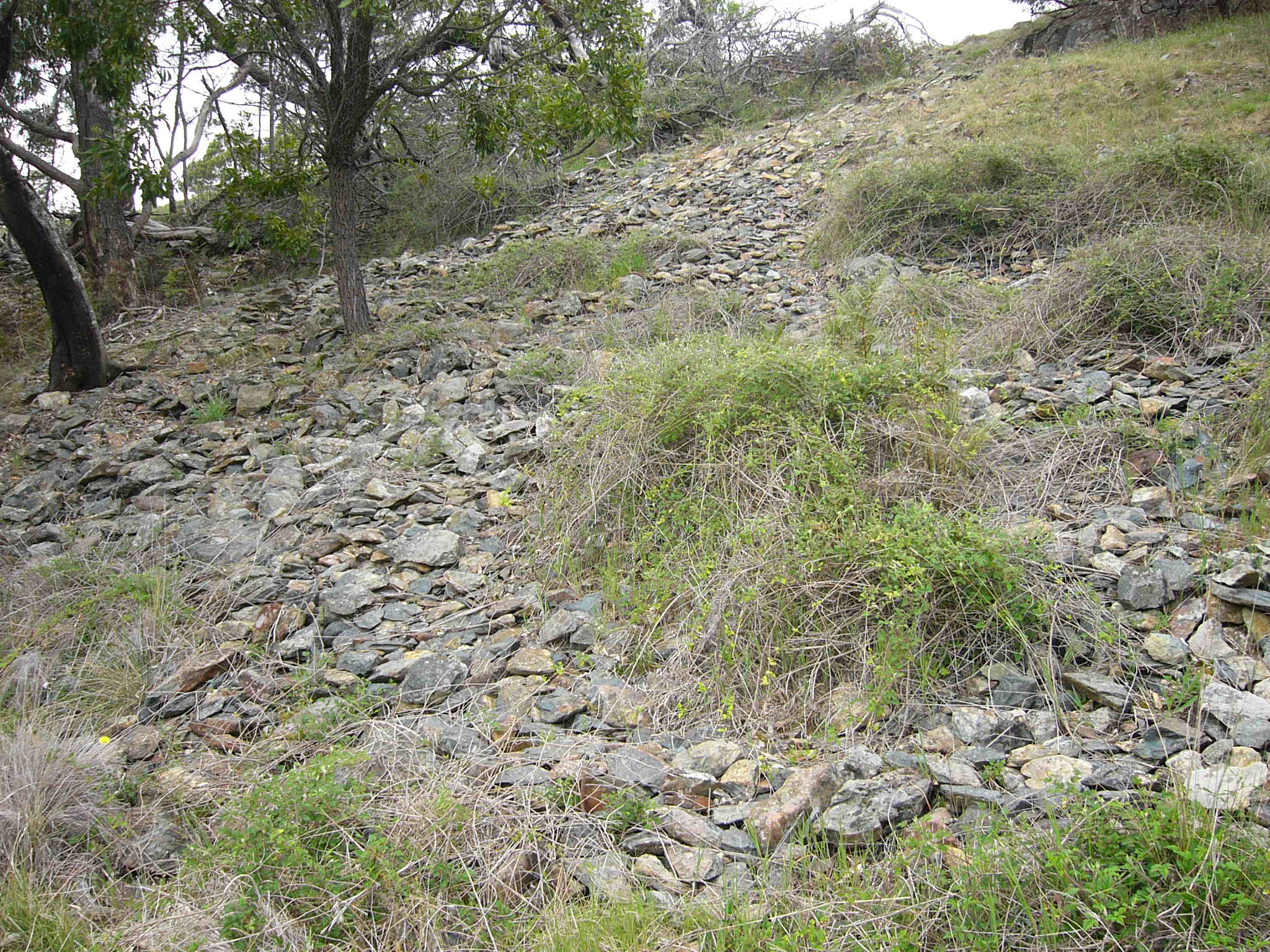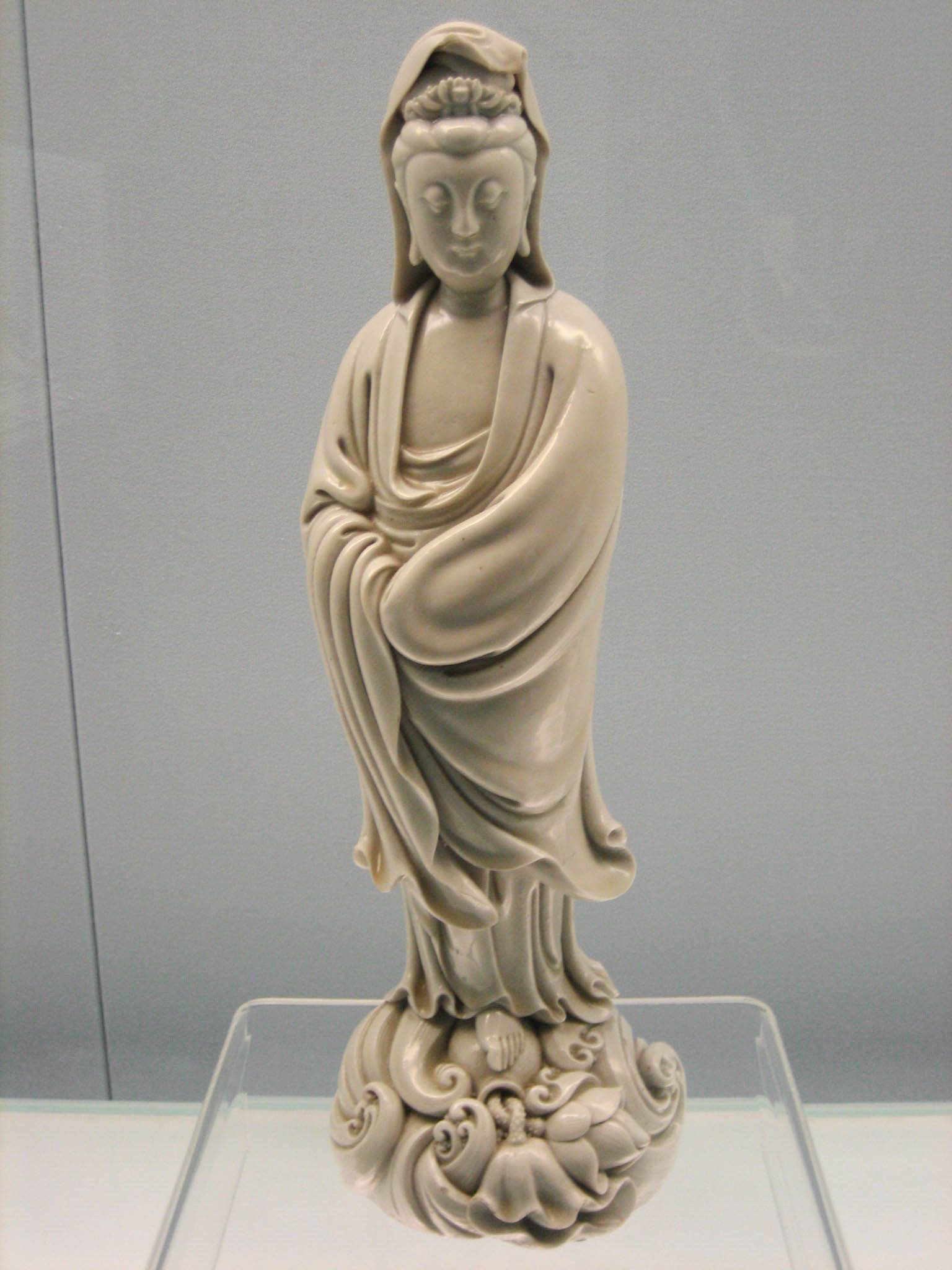|
Obsidian Use In Mesoamerica
Obsidian is a naturally formed volcanic glass that was an important part of the material culture of Pre-Columbian Mesoamerica. Obsidian was a highly integrated part of daily and ritual life, and its widespread and varied use may be a significant contributor to Mesoamerica's lack of metallurgy. Lithic and contextual analysis of obsidian, including source studies, are important components of archaeological studies of past Mesoamerican cultures and inform scholars on economy, technological organization, long-distance trade, ritual organization, and socio-cultural structure. Production techniques Due to its glassy internal structure, obsidian is relatively easy to work, as it breaks in very predictable and controlled ways via conchoidal fracturing. This contributed to its prolific use throughout Mesoamerica. It is obtained by either quarrying source sites or in nodule form from riverbeds or fractured outcrops. Following the removal of cortex (when applicable), bifacial, uni ... [...More Info...] [...Related Items...] OR: [Wikipedia] [Google] [Baidu] |
Arrowhead
An arrowhead or point is the usually sharpened and hardened tip of an arrow, which contributes a majority of the projectile mass and is responsible for impacting and penetrating a target, or sometimes for special purposes such as signaling. The earliest arrowheads were made of stone and of organic materials; as human civilizations progressed, other alloy materials were used. Arrowheads are important archaeological artifacts; they are a subclass of projectile points. Modern enthusiasts still "produce over one million brand-new spear and arrow points per year". A craftsman who manufactures arrowheads is called an arrowsmith. History In the Stone Age, people used sharpened bone, flintknapped stones, flakes, and chips and bits of rock as weapons and tools. Such items remained in use throughout human civilization, with new materials used as time passed. As archaeological artifacts such objects are classed as projectile points, without specifying whether they were ... [...More Info...] [...Related Items...] OR: [Wikipedia] [Google] [Baidu] |
Uniface
In archaeology, a uniface is a specific type of stone tool that has been flaked on one surface only. There are two general classes of uniface tools: modified flakes and formalized tools, which display deliberate, systematic modification of the marginal edges, evidently formed for a specific purpose. Modified flakes While many worked stone tools can be technically designated as "modified flakes," for lithic analysis purposes a modified flake is usually defined as a lithic flake with one or more edges that were altered either through opportunistic use or through nonsystematic retouching; it is often difficult to identify the process that produced the observed edge. Opportunistic use occurs when a sharp flake is used as-is, without edge-modification. Nonsystematic retouching occurs when pressure flaking is used to remove a few trimming flakes from the edge, in no discernible or extensive pattern. Formalized uniface tools Some unifaces are characterized by systematic edge retouch, w ... [...More Info...] [...Related Items...] OR: [Wikipedia] [Google] [Baidu] |
Retouch (lithics)
Retouch is the act of producing scars on a stone flake after the ventral surface has been created. It can be done to the edge of an implement in order to make it into a functional tool, or to reshape a used tool. Retouch can be a strategy to reuse an existing lithic artifact and enable people to transform one tool into another tool. Depending on the form of classification that one uses, it may be argued that retouch can also be conducted on a core-tool, if such a category exists, such as a hand-axe. Retouch may simply consist of roughly trimming an edge by striking with a hammerstone, or on smaller, finer flake or blade tools it is sometimes carried out by pressure flaking. Other forms of retouch may include burination, which is retouch that is conducted in a parallel orientation to the flake margin. Retouch is often taken as one of the most obvious features distinguishing a tool from a waste by-product of lithic manufacture (debitage In archaeology, debitage is all the materi ... [...More Info...] [...Related Items...] OR: [Wikipedia] [Google] [Baidu] |
Monte Alban
Monte may refer to: Places Argentina * Argentine Monte, an ecoregion * Monte Desert * Monte Partido, a ''partido'' in Buenos Aires Province Italy * Monte Bregagno * Monte Cassino * Montecorvino (other) * Montefalcione Portugal * Monte (Funchal), a civil parish in the municipality of Funchal * Monte, a civil parish in the municipality of Fafe * Monte, a civil parish in the municipality of Murtosa * Monte, a civil parish in the municipality of Terras de Bouro Elsewhere * Monte, Haute-Corse, a commune in Corsica, France * Monte, Switzerland, a village in the municipality Castel San Pietro, Ticino, Switzerland * Monte, U.S. Virgin Islands, a neighborhood * Monte Lake, British Columbia, Canada Arts, entertainment, and media * ''Monte'' (film), a 2016 drama film by Amir Naderi * Three-card Monte * Monte Bank or Monte, a card game Other uses * Monte (dessert) a milk cream dessert produced by the German dairy company Zott * Monte (mascot), the mascot of the ... [...More Info...] [...Related Items...] OR: [Wikipedia] [Google] [Baidu] |
Jet (lignite)
Jet, Jets, or The Jet(s) may refer to: Aerospace * Jet aircraft, an aircraft propelled by jet engines ** Jet airliner ** Jet engine ** Jet fuel * Jet Airways, an Indian airline * Super Air Jet, an Indonesian airline * Wind Jet (ICAO: JET), an Italian airline * Journey to Enceladus and Titan (JET), a proposed astrobiology orbiter to Saturn * Jet pack, a backpack personal flying device containing a jet motor * Fighter jet, a military aircraft Aircraft * Business jet ** Boeing Business Jet * Very light jet ** Cirrus Vision SF50, originally called "The-Jet by Cirrus" ** Eclipse 400, originally called "Eclipse Concept Jet" ** Honda HA-420 HondaJet ** Piper PA-47 PiperJet Other areas of science, math, and technology * Jet (fluid), a coherent stream of fluid that is projected into a surrounding medium, usually from some kind of a nozzle or aperture * Jet (gemstone), a black or brown semi-precious mineraloid * Jet (mathematics), an operation on a differentiable function ... [...More Info...] [...Related Items...] OR: [Wikipedia] [Google] [Baidu] |
Spanish Empire
The Spanish Empire, sometimes referred to as the Hispanic Monarchy (political entity), Hispanic Monarchy or the Catholic Monarchy, was a colonial empire that existed between 1492 and 1976. In conjunction with the Portuguese Empire, it ushered in the European Age of Discovery. It achieved a global scale, controlling vast portions of the Americas, Africa, various islands in Asia and Oceania, as well as territory in other parts of Europe. It was one of the most powerful empires of the early modern period, becoming known as "the empire on which the sun never sets". At its greatest extent in the late 1700s and early 1800s, the Spanish Empire covered , making it one of the List of largest empires, largest empires in history. Beginning with the 1492 arrival of Christopher Columbus and continuing for over three centuries, the Spanish Empire would expand across the Caribbean Islands, half of South America, most of Central America and much of North America. In the beginning, Portugal was ... [...More Info...] [...Related Items...] OR: [Wikipedia] [Google] [Baidu] |
Toribio De Benavente Motolinia
Toribio of Benavente (1482, Benavente, Spain – 1565, Mexico City, New Spain), also known as Motolinía, was a Franciscan missionary who was one of the famous Twelve Apostles of Mexico who arrived in New Spain in May 1524. His published writings are a key source for the history and ethnography of the Nahuas of central Mexico in the immediate post-conquest period as well as for the challenges of Christian evangelization. He is probably best known for his attacks on the Dominican defender of the rights of the indigenous peoples, Bartolomé de las Casas, who criticized the Conquest. Though agreeing with Las Casas's criticism of the abuses of the conquistadors, he did not agree with the wholesale condemnation of the Spanish Conquest, as well as criticisms of the Franciscan practice of baptism ''en masse'' of the indigenous people of the new world. Due to these differences he went on to vilify Las Casas. Early life Toribio entered the Franciscan Order at the age of seventeen, dropp ... [...More Info...] [...Related Items...] OR: [Wikipedia] [Google] [Baidu] |
Lithic Core
In archaeology, a lithic core is a distinctive Artifact (archaeology), artifact that results from the practice of lithic reduction. In this sense, a core is the scarred nucleus resulting from the detachment of one or more lithic flake, flakes from a lump of source material or tool stone, usually by using a hard hammer precursor such as a hammerstone. The core is marked with the negative scars of these flakes. The surface area of the core which received the blows necessary for detaching the flakes is referred to as the striking platform. The core may be discarded or shaped further into a core tool, such as can be seen in some types of handaxe. Definitions A "core" can be defined in a number of different ways based on the theoretical and methodological approach of the archaeologist. Typological approaches to classify cores are generally based on a combination of the technological attributes and presumed function of an artefact while technological approaches are generally based ... [...More Info...] [...Related Items...] OR: [Wikipedia] [Google] [Baidu] |
Pressure Flaking
In archaeology, in particular of the Stone Age, lithic reduction is the process of fashioning stones or rocks from their natural state into tools or weapons by removing some parts. It has been intensely studied and many archaeological industries are identified almost entirely by the lithic analysis of the precise style of their tools and the chaîne opératoire of the reduction techniques they used. Normally the starting point is the selection of a piece of tool stone that has been detached by natural geological processes, and is an appropriate size and shape. In some cases solid rock or larger boulders may be quarried and broken into suitable smaller pieces, and in others the starting point may be a piece of the debitage, a flake removed from a previous operation to make a larger tool. The selected piece is called the lithic core (also known as the "objective piece"). A basic distinction is that between flaked or knapped stone, the main subject here, and ground stone ob ... [...More Info...] [...Related Items...] OR: [Wikipedia] [Google] [Baidu] |
Prismatic Blade
In archaeology, a prismatic blade is a long, narrow, specialized stone flake tool with a sharp edge, like a small razor blade. Prismatic blades are flaked from stone cores through pressure flaking or direct percussion. This process results in a very standardized finished tool and waste assemblage. The most famous and most prevalent prismatic blade material is obsidian, as obsidian use was widespread in Mesoamerica, though chert, flint, and chalcedony blades are not uncommon. The term is generally restricted to Mesoamerican archaeology, although some examples are found in the Old World, for example in a Minoan grave in Crete. Prismatic blades were used for cutting and scraping, and have been reshaped into other tool types, such as projectile points and awls. Morphology Prismatic blades are often trapezoidal in cross section, but very close in appearance to an isosceles trapezoid. Triangular blades (in cross-section) are also common. The ventral surface of the prismatic ... [...More Info...] [...Related Items...] OR: [Wikipedia] [Google] [Baidu] |
Eccentric Flint (archaeology)
An eccentric flint is an elite chipped artifact of an often irregular ('eccentric') shape produced by the Classic Maya civilization of ancient Mesoamerica.SFU Museum of Archaeology and Ethnology. Although generally referred to as "flints", they were typically fashioned from chert, chalcedony and obsidian. Distribution Eccentric flints were first categorised by western archaeologists in Belize in the first half of the 20th century, when they were identified as ceremonial in nature. The objects are generally found in the eastern portion of the central Maya area, in the Petén Department of Guatemala and in neighbouring Belize, with few in the west and the Yucatán Peninsula. Very few have been recovered from the Guatemalan Highlands and it is unlikely they were ever manufactured there.Thompson 1970, 1990, p.147. Small obsidian eccentrics have been found at the great metropolis of Teotihuacan in the Valley of Mexico.Thompson 1970, 1990, p.149. Physical characteristics Eccentric fli ... [...More Info...] [...Related Items...] OR: [Wikipedia] [Google] [Baidu] |
Figurine
A figurine (a diminutive form of the word ''figure'') or statuette is a small, three-dimensional sculpture that represents a human, deity or animal, or, in practice, a pair or small group of them. Figurines have been made in many media, with clay, metal, wood, glass, and today plastic or resin the most significant. Ceramic figurines not made of porcelain are called terracottas in historical contexts. Figures with movable parts, allowing limbs to be posed, are more likely to be called dolls, mannequins, or action figures; or robots or automata, if they can move on their own. Figurines and miniatures are sometimes used in board games, such as chess, and tabletop role playing games. The main difference between a figurine and a statue is size. There is no agreed limit, but typically objects are called "figurines" up to a height of perhaps , though most types are less than high. Prehistory In China, there are extant Neolithic figurines. European prehistoric figurines of wo ... [...More Info...] [...Related Items...] OR: [Wikipedia] [Google] [Baidu] |






